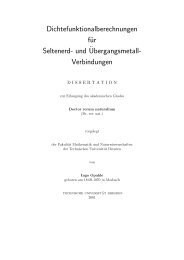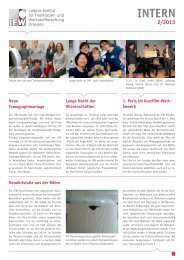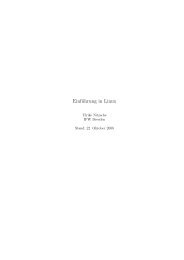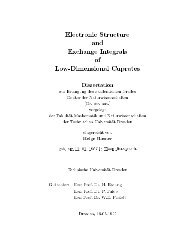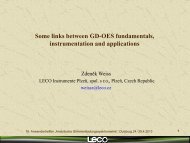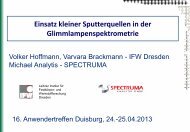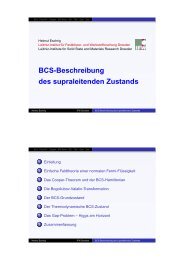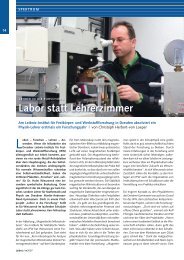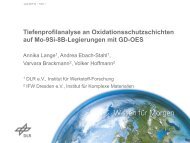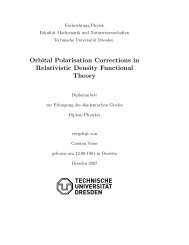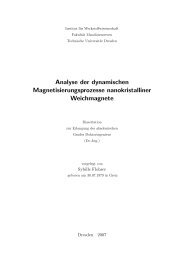ALBERTO BOLLERO REAL
ALBERTO BOLLERO REAL
ALBERTO BOLLERO REAL
Create successful ePaper yourself
Turn your PDF publications into a flip-book with our unique Google optimized e-Paper software.
1 Introduction<br />
Nd 2 Fe 14 B system and, afterwards, two similar systems are considered: Nd 2 Co 14 B and<br />
Pr 2 Fe 14 B. The main limitation of Nd 2 Fe 14 B is its relatively low Curie temperature which<br />
disables high temperature applications because of the rapid decrease of its hard magnetic<br />
properties. Substitution of Co for Fe significantly enhances the Curie temperature. At low<br />
temperatures, the Nd 2 Fe 14 B phase exhibits another disadvantage: a spin reorientation takes<br />
place at temperatures lower than 135 K. Contrary to this Pr 2 Fe 14 B is a very good candidate<br />
for low temperature applications since no spin reorientation takes place. Furthermore, the<br />
final magnet performance at room temperature for the Pr 2 Fe 14 B system is comparable to<br />
that of NdFeB-based magnets.<br />
Melt-spinning, mechanical alloying and the hydrogenation-disproportionationdesorption-recombination<br />
(HDDR) process are three different methods of processing<br />
nanocrystalline NdFeB alloys (Chapter 5). The two former methods are used in a first stage<br />
of this work to produce highly coercive powders (Chapters 6). Second, it is shown that<br />
intensive milling is a very versatile technique to obtain high-quality isotropic<br />
nanocomposite powders by blending a Pr-based starting alloy with elementary powders of<br />
a soft magnetic α-Fe phase (Chapter 7). The evolution of the magnetic properties in<br />
dependence on the different Fe fractions is studied, and the achieved energy density and<br />
Curie temperature of the optimally processed composition make it an excellent candidate<br />
for bonded magnets with the additional advantage of a reduced R-content, i.e. lower cost<br />
and improved corrosion resistance. An analysis of magnetisation reversal in these Pr-based<br />
nanocomposite magnets has been carried out in order to obtain a better understanding of<br />
the intergranular interactions present. These results are compared with those of decoupled<br />
magnets (Chapter 8).<br />
The last part of this work (Chapter 9) shows the possibility of producing<br />
nanocrystalline isotropic magnets of Nd 2 Fe 14 B and Nd 2 Co 14 B with an enhanced remanence<br />
by a mechanically activated gas-solid reaction. This is achieved by using the reactive<br />
milling technique which consists of ball milling in enhanced hydrogen pressures and<br />
temperatures. The main problem is the high thermodynamical stability of the Nd 2 Co 14 B<br />
parent compound. In the present work the reactive milling technique has been applied to<br />
Nd 2 Fe 14 B and Nd 2 Co 14 B alloys.<br />
3



